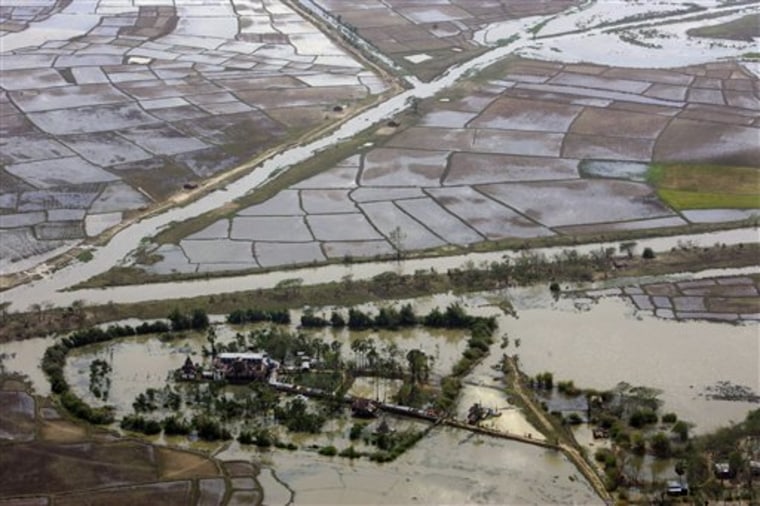Hundreds of thousands of people are still without decent jobs and housing a year after Cyclone Nargis ripped through Myanmar, leaving many vulnerable to the coming monsoon rains and mired in a life of poverty, humanitarian groups said Thursday.
Foreign governments and charities provided $315 million for food aid and emergency assistance in the months after the tropical storm hit the country May 2-3, 2008, leaving 138,000 people dead or missing and another 800,000 homeless.
But international charities and U.N. agencies like the World Food Program say hundreds of millions of dollars are still needed over the next several years to rebuild the delta's decimated infrastructure and provide farmers and fishermen with the cash they need to regain their livelihoods.
Many noted the funds raised so far are about 40 times less than $12 billion raised for the 2004 tsunami, even though Nargis was the worst natural disaster in Myanmar's modern history and the world's fifth deadliest in the past 40 years.
"We can provide a farmer and his family with food in a weekly ration, but that same farmer will need cash to purchase seeds, to restore fields and replace the plows and livestock they lost," WFP spokesman Paul Risley told reporters at a news conference in Bangkok.
Risley said his agency expects to provide food rations through the year for 350,000 people while the International Federation of Red Cross and Red Crescent Societies said 100,000 people are still living in tents and in need of permanent shelter.
"Tens of thousands more live in temporary, substandard shelters, which will not be able to withstand another storm," said Bernd Schell, the head of the IFRC's country office in Yangon.
When the cyclone hit, a massive wall of water rushed across the low-lying delta, flattening or washing away almost everything in its path. Some 450,000 homes were destroyed and 350,000 damaged. About 75 percent of health facilities were damaged, as were 4,000 or more schools.
The military regime that rules Myanmar, also known as Burma, was widely condemned for denying foreign aid agencies access to the delta in the weeks that followed the disaster.
But it eventually allowed them in and now 90 percent of survivors have been provided with food, clean drinking water and basic shelter needs. A year later, however, aid groups worry that cash is running short.
The British charity Oxfam also warned of the need for fresh funds, saying many poor families face the bleak prospect of falling deeper in debt if they don't get help from the outside world.
The Tripartite Core Group — representing Myanmar's government, U.N. agencies and the 10-member Association of Southeast Asian Nations — released a three-year reconstruction plan in February that calls for $700 million in additional funding. It could not provide figures on how much has been raised so far, though it said Britain, Japan and several European nations have promised to contribute.
